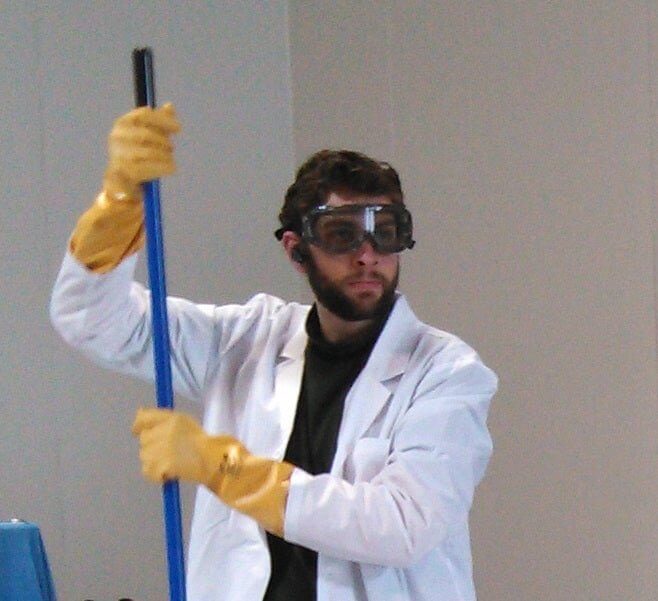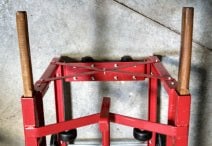 Our meadmaker stirring his brew
Our meadmaker stirring his brew
with a mead-axe
Now you’re ready to grow. You’re ready to move on. You’re ready to make something beautiful, unique, and out of this world. You do not, however, have the foggiest idea where to begin.
Inventing a recipe can be a little nerve-racking since you very well may have months of work and lotsa cash on the line. You know that you won’t poison your friends, but what if you make something gut-wrenchingly bad? What if your friends try it and start telling people that mead is made with honey and goat urine? Answer: You need to try your mead before you give it to other people, and also you probably need better friends.
There is good news: We at Groennfell Meadery have broken down the three simple ways to develop a recipe. For our examples, we’re going to be making a blueberry melomel.
1) Procure at least four 1 gallon jugs and an appropriate number of airlocks, bungs, etc.
2) Mix up your control items in one batch so you’re sure that you’re only testing for one variable. In this case, mix your water, honey, nutrient, and yeast and divide it evenly into your jugs.
3) In one jug, add 4 oz. blueberry juice; in the next add 2 oz. blueberry juice; in the third add raw blueberries; in the next put in blueberry extract, and so on.
4) Complete your fermentation, bottle it, label it appropriately, and do a blind tasting.
5) Find a winner and make tons of it!
1) Make a batch of your favorite mead, bottle it up, keg it, whatever you do…
2) Pour out a glass of it and carefully add blueberry juice with a medicine dropper. When it tastes about right, write down the number of drops.
3) Now try it with drops of concentrate.
4) Note: It’s hard to put blueberries into an eye dropper.
5) When you have decided which extract, concentrate, source, and quantity gives you the flavor you’re looking for, scale up the batch size to your normal fermentation quantity and see if it tastes right.
1) Decide that you want to make a batch of blueberry mead.
2) Ask yourself: “How much do I like blueberries?”
3) If the answer is “a lot,” put in a lot of blueberry juice, 1200 pounds of honey, house yeast, and cross your fingers.
4) If the answer is, “not so much,” make something else.
Which technique do we use? We’ll never tell!








